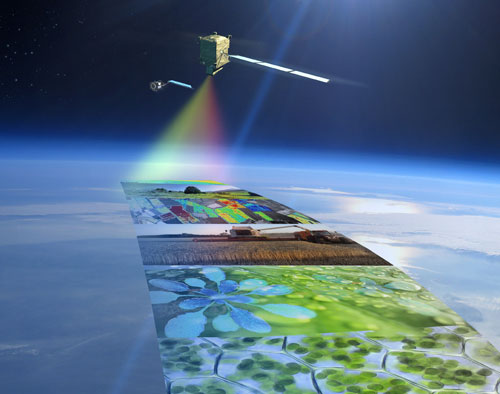- FLEX
- Mission
- FLEX Objectives
FLEX Objectives

The objectives of the FLEX mission are:
- To assess the quality of fluorescence-derived photosynthesis data against classical optically-based methods (i.e. from fraction of absorbed photosynthetically active radiation times Light Use Efficiency)
- To address in more detail temporal and spatial scaling issues (from towers to satellite footprints)
- To identify and characterise the effects of different types of stress on fluorescence and photosynthesis (especially drought and freezing air temperatures)
- To indicate potential applications of the novel fluorescence observations
- To advance our understanding of the functioning of the photosynthetic machinery, and the actual health and performance of terrestrial vegetation. Quantification of the fluorescence emitted by the two photosystems is needed together with information on the canopy structure, its composition, and temperature.
The FLEX mission will provide global maps of vegetation fluorescence emission spectra as primary measurements.
The conversion of atmospheric carbon dioxide and sunlight into energy-rich carbohydrates through photosynthesis is one of the most fundamental processes on Earth – and one on which we all depend. When illuminated, green plants reflect, transmit and absorb light, but they also re-emit light in the form of fluorescence. When chlorophyll molecules in a leaf absorb photons, electrons are energised to an excited state. The physiological state of the plant then determines what happens to these energised electrons. For example, under optimal conditions, approximately 82% of the absorbed light is used for carbon assimilation (photochemistry) while the remaining light is lost as heat and dissipated as chlorophyll fluorescence emissions. Fluorescence is, therefore, the most directly measurable reporter for photosynthetic efficiency. Information from FLEX will improve our understanding of the way carbon moves between plants and the atmosphere and how photosynthesis affects the carbon and water cycles.